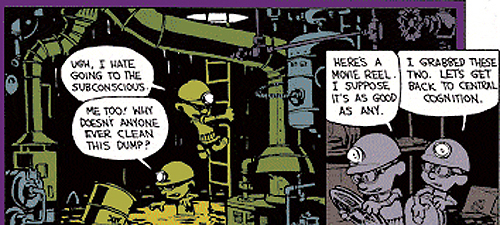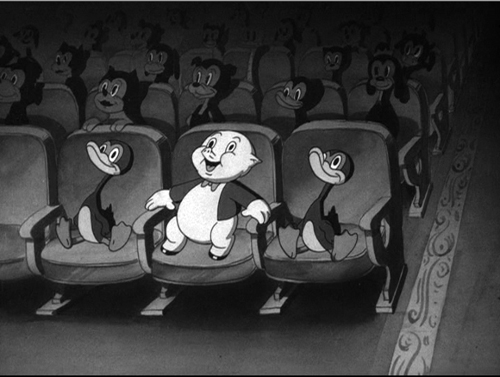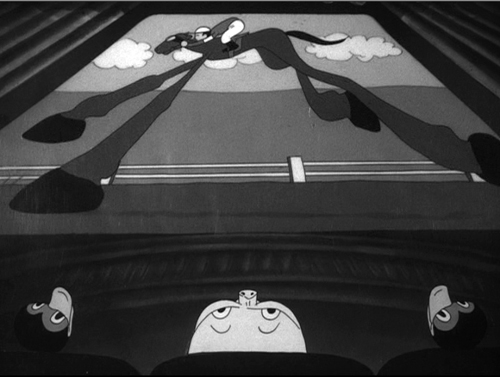In cognito (we trust)
Wednesday | May 30, 2012 open printable version
open printable version
From Calvin & Hobbes, 10 April 1994.
DB here:
Every year at about this time, I trumpet the upcoming convening of the Society for Cognitive Studies of the Moving Image. This year’s powwow is held at picturesque Sarah Lawrence College, under the auspices of Professor Malcolm Turvey, no stranger to this blog. The final day of it will take place at NYU’s Cinema Studies Department. I had to miss last year’s conference for health reasons, but I’ll be there this year with a paper on 1940s Hollywood narrative.
Some earlier blog entries sketch out my take on what’s interesting about the group’s work. You can find treatment of the 2008 Madison gathering here and here; the 2009 Copenhagen event here and here with an epilogue about Lars von Trier and Asta Nielsen; and afterthoughts on the 2010 Roanoke meeting here. Last year, because I couldn’t go, I offered a web essay, here. This discusses my current thinking about the cognitive research framework.
This year, although I’m going, I’m again offering a new web essay. It’s about how models of mind (Gestalt, psychoanalytic, cognitive, etc.) have shown up in film theory and criticism. The piece is organized chronologically, and it tries to tie ideas about the psychology of cinema to a history of filmmaking: the theories I discuss emerge as responses to changes in form, style, and theme. The essay will eventually be reprinted in Art Shimamura’s anthology, Psychocinematics: Exploring Cognition at the Movies, forthcoming from Oxford University Press. Art’s collection gathers many cutting-edge essays from SCSMI members.
A sideways note: I learned recently that my old book, Narration in the Fiction Film (1985), sold 470-some copies last year. That’s a lot for an old academic study, especially one with many used copies in circulation. I infer from this (good cognitivists make inferences) that some instructors are using it in courses. I’m grateful, naturally, but I want to signal that I’ve altered some of the views I expressed in that book. If a professor is using my book to exemplify the cognitive perspective on narrative, I’d urge him or her to consider as well the web essay I already mentioned, “Common Sense + Film Theory = Common-Sense Film Theory?” In addition, my most recent answers to questions about filmic storytelling, in which narration is treated as one aspect of a larger process, can be found in “Three Dimensions of Film Narrative,” in the collection Poetics of Cinema. In other words: I hope I’ve learned something since 1985.
The week following the SCSMI gathering, UCLA is hosting Visual Narrative: An Interdisciplinary Workshop on 20-22 June. This very promising event hosts presentations and commentaries from linguists, philosophers, and a couple of SCSMI star psychologists. Dan Levin has already made appearances in this blog (notably here), and Tim Smith, Continuity Boy, has contributed our perennially popular guest entry, “Watching You Watch THERE WILL BE BLOOD.” The distinguished philosopher of art George Wilson, author of Narration in Light, will also be there. Thanks to Rory Kelly, one of the Workshop’s organizers, for tipping me off.
After SCSMI (from which, or about which, I hope to blog), we’re off to Bologna, so expect more of our usual reportage from Cinema Ritrovato, that frenzy of movies and movie lovers. Coming up next, though, there’s Bette Davis to reckon with.
Cognition is important, but so is perception, as every front-row sitter knows. From The Film Fan (1939, Warner Bros., Bob Clampett).
















